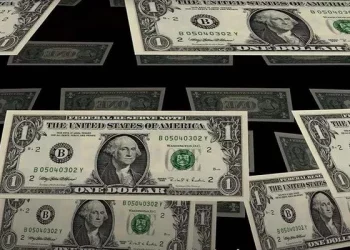The Australian Dollar (AUD) rebounded against the US Dollar (USD) on Wednesday, recovering from early losses despite broader risk aversion in global markets. The AUD/USD pair faced selling pressure after former US President Donald Trump threatened new tariffs, while investors awaited the Federal Open Market Committee (FOMC) Meeting Minutes for further policy guidance.
Australia’s Wage Growth Slows, RBA Delivers Rate Cut
Australia’s Wage Price Index rose by 0.7% quarter-over-quarter in Q4 2024, missing expectations of 0.8% and slowing from the previous quarter’s 0.9% gain. On an annual basis, wage growth softened to 3.2%, down from a revised 3.6%, marking its slowest pace since Q3 2022.
Adding to AUD weakness, the Reserve Bank of Australia (RBA) cut its Official Cash Rate (OCR) by 25 basis points (bps) to 4.10% on Tuesday—the first rate cut in four years. RBA Governor Michele Bullock acknowledged that high interest rates have curbed inflation but cautioned against declaring victory too soon. She also emphasized that further rate cuts are not guaranteed, despite market speculation.
Trump’s Tariff Threats Shake Market Sentiment
The US Dollar Index (DXY) dipped slightly to 107.00, while US Treasury yields stood at 4.29% (2-year) and 4.55% (10-year) at the time of writing. However, renewed trade concerns could bolster the USD.
According to Bloomberg, Trump announced plans to impose a 25% tariff on foreign cars, with additional levies expected on semiconductor chips and pharmaceuticals. An official decision could be made by April 2, raising concerns about global trade disruptions.
Meanwhile, US Federal Reserve officials remain cautious on interest rates. San Francisco Fed President Mary Daly noted uncertainty regarding rate cuts in 2025, while Philadelphia Fed President Patrick Harker supported maintaining current policy, citing persistent inflation. Fed Governor Michelle Bowman echoed similar sentiments, warning that rising asset prices could hinder inflation progress.
Fed Chair Jerome Powell, in his semi-annual report to Congress, reinforced a cautious stance, stating that strong job growth and economic resilience allow policymakers to take their time before considering rate cuts. He also warned that Trump’s tariff policies could fuel inflationary pressures, complicating the Fed’s efforts to ease monetary policy.
China Signals Private Sector Support, AUD/USD Tests Key Levels
In a separate development, Chinese President Xi Jinping met with Alibaba co-founder Jack Ma and other business leaders, signaling Beijing’s renewed focus on private-sector growth as a driver of economic recovery. According to Bloomberg, Xi stressed the importance of removing barriers to fair competition and production resources—an initiative that could support broader market sentiment.
The AUD/USD pair traded around 0.6360 on Wednesday, forming an ascending channel pattern that suggests a bullish bias. The 14-day Relative Strength Index (RSI) remains above 50, reinforcing the positive outlook.
Key technical levels:
Resistance: The pair could test the 0.6400 psychological barrier, aligning with the upper boundary of the ascending channel.
Support: Initial support lies at the nine-day Exponential Moving Average (EMA) at 0.6327, followed by the 14-day EMA at 0.6309. A stronger support zone exists near 0.6290, marking the lower boundary of the channel.
With risk sentiment shifting, traders will closely watch US economic data and Fed policy signals, alongside developments in global trade tensions, to gauge the next move for AUD/USD.
Related Topics:

























